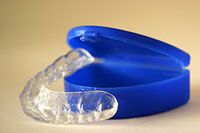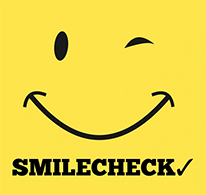Make the most of your efforts and keep your smile in great condition!
Finally, your metal braces have been removed, and your teeth are absolutely straight and beautiful. You do, however, have a long way to go on your orthodontic journey. Wearing a retainer will guarantee that your teeth remain in the best possible condition and that your results are long-lasting. With the use of retainers, tooth shifting may be avoided or at least mitigated. A retainer is a post-braces device that helps keep teeth straight while the surrounding tissues adjust to the new position of the teeth.
Types of Retainers
Each retainer is unique and may be removed or permanently affixed.
- Traditional detachable retainers typically consist of an acrylic arch attached to a metal wire. The metal wires may be replaced as needed to finish the treatment and shift the front teeth somewhat farther.
- Essix retainers, also known as aligner-style retainers, have the appearance of transparent aligners and are a more appealing alternative to wire retainers. Wear this clear retainer from canine to canine or across the whole arch of your teeth (clip-on retainer). It’s constructed from a mold of your straightened teeth.
- A fixed retainer is made from metal wires that are attached to your teeth. Even though the device isn’t required for more than a year after wisdom teeth removal, it’s often kept in place permanently.
Advantages and disadvantages
- Removable retainers may be removed for eating and hygiene reasons.
- Because detachable retainers are often lost, keep them in the case whenever you remove them to eat or brush.
- A fixed retainer is great if you don’t want to keep track of it or worry about how many hours a day it must be worn.
- Flossing is a little more complicated in removing tartar from teeth with permanent retainers. Floss threaders are often necessary for persons who wear fixed retainers to obtain dental floss between the retainer and teeth.
Retainer Instructions

- Wear your retainer at all times unless otherwise ordered by your orthodontist.
- While you’re eating, be sure your retainer is out of the way! (Most missing appliances are discovered in school cafeterias and restaurants.)
- Once a day, thoroughly clean the retainer with a toothbrush and toothpaste. In this case, warm, but not hot, water should be utilized. Brushing retainers may help remove plaque and odors. Although orthodontic appliance cleaners such as Efferdent® are available, they should not be used in place of brushing your teeth after each meal.
- If you’re not wearing your retainer, ensure sure it’s always in its case. Pets like gnawing on them.
- Speaking may be difficult for you at first. To grow more used to it, practice speaking, reading, or singing aloud.
- Because retainers are delicate, take extra care with them. If your retainer is lost or destroyed, please contact us right away.
- If you have any questions or concerns about your retainer, please contact us. Do not try to make any changes to it on your own.
- Always bring your retainer with you to the orthodontist.
- Although changing retainers is expensive, they may last a very long time if properly looked for!
- If you wish to swim, remove your retainer.
- Check that your retainers aren’t in touch with anything that may become hot, such as hot car dashboards, pockets, or the washing machine.
















